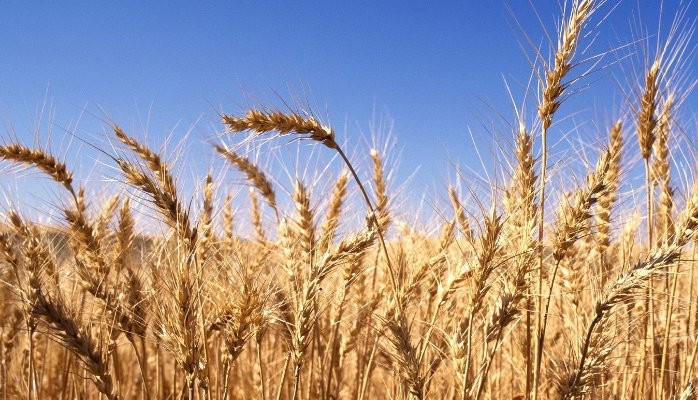
It's Harvest Time: 5 Lessons We Can Learn About Growth From Nature
In the North East US, we are approaching the fall season – a time also known as “harvest time”. During this time, growers undertake the process of gathering mature crops from the fields, assessing their productivity yields & developing plans for the next growing season.
As business leaders in the 3rd and 4th quarters, we find ourselves in similar activities – gathering data, assessing our results & developing plans for growth in the coming year. Surprisingly, the similarities don’t stop there. In fact, I believe the basic principles for growth & productivity in horticulture can be key for driving business growth as well.
Here are 5 Key Lessons We Can Learn About Growth from Nature:
1. The Environment Matters
Planting a banana tree in the arctic would be foolish. The requirements for growth (soil, climate, etc.) simply don’t match the environment. Likewise, business growth requires a deep understanding of the market & a clear matching of the opportunity to it.
Living on mere assumptions of customer needs, competitive threats & other market factors is foolish as well. It takes deep knowledge of the market & regular “soil sampling” to make the right choices & adapt to changing dynamics.
2. The Wrong Landscape Hinders Growth
Different crops grow best in different landscapes: pumpkins spread on the ground, beans climb poles, corn stands in rows & grapes climb in vineyards. In the same way, organizational structures must be tailored to best achieve business goals. One size DOES NOT fit all.
Equally important is placing the right plants in the right landscape. A grape vine on the ground yields bruised grapes. Likewise, force-fitting employees in roles & structures not suited to them yields similar outcomes.
3. There’s No Harvest If You Don’t Plant Something
A growing season starts at the last frost of spring & continues to the first hard frost of fall. To a grower, that translates to 2 realities:
- Knowing when to plant is key to growth
- Planning when to harvest is key to productivity
In business, the life-cycle of our products & offerings is our growing season. Like crops, business growth doesn’t last forever & we must constantly assess the right timing for planting & harvesting.
The truth is, there is no growth unless you plant something NEW along the way. Sadly, many businesses get too focused on wringing productivity out of past harvests when they should be planting for the future.
4. Sometimes Pruning is Necessary
In horticulture, “pruning” is done to “cut away dead or overgrown branches or stems, especially to increase fruitfulness & growth”. Effective pruning requires a close monitoring of plant growth, wise identification of deadwood & willingness to cut when necessary.
In the same way, there are times when the best plan for the health & productivity of the business is to “cut” something away. Sometimes it’s the pet project that hasn’t delivered. Other times it’s a signature brand in decline. As leaders, we must be able to make the right cuts when needed to eliminate waste and redirect growth.
5. You reap what you sow
No one ever planted tomato seeds to grow a watermelon. And no one who plants strawberries uses a hay-baler to harvest them. No, to yield the best harvest, growers sow seeds for exactly what they desire to harvest later.
This is also true in business and in life overall. You reap what you sow. Yet, many business leaders today seem surprised with their outcomes because they simply don’t understand this truth. Instead of planting success, they are mistakenly planting failure.
Some examples:
- They desire growth, but they don’t invest in it
- They desire productivity, but they stifle it
- They desire innovation, but they starve it
- They desire loyalty, but they break it
In nature as in business, the only sure way to get the result you want is to deliberately plant the seeds of it up front.
Summary
As business leaders, we have much we can learn from nature. During this time of harvest & planning, stop to ask yourself these questions:
- Do we truly know & understand the environment of our business?
- Is my organizational landscape designed to best enable success?
- Are we investing to plant something new or simply living off old-harvests?
- What must we prune to improve the health of our business overall?
- What is the fruit of my leadership and how is what I’m planting contributing to that?
If you would like help assessing these or cultivating a plan for your organization, please contact Jill for more information. Also, check out our website to see more about our services and successes.
Sales & Mgt Advisory, Business Development(Domestic & Foreign) , Mid-Market M & A
8yRight on. Too often business owners are surprised to find out that the results are not what they have anticipated but rarely they take the time, and effort, to evaluate the actions that let DIRECTLY to those outcomes. Your analogy made it a bit more clear, direct and easier to follow.
Legal Information Executive-Retired
8yGreat analogies, Jill, and true assessments. Leading, growing and succeeding in business requires the timing and investment you suggest. Nice piece!